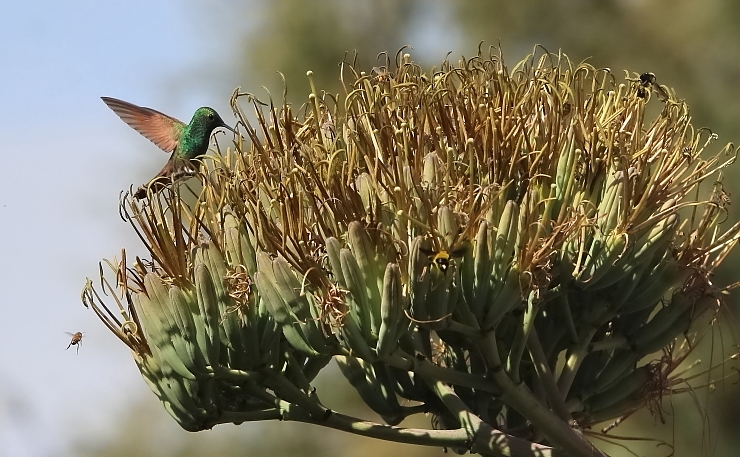
As I mentioned last week, upon my return last month from California, where I had birded a couple of hours each day, I was ready for a bit of a break. Oh, no, I didn’t stop birding entirely. That would be absolutely crazy. But I did pick easier targets during the first two weeks.
My first post-trip outing was my least ambitious: I went to the natural area that begins just on the other side of the neighborhood in which we live, Los Filtros Viejos Canyon. It was not a revelatory outing, but the species and photos were surprisingly good. My second outing was a bit farther afield — it took about twenty minutes to drive to my starting point. But, in a sense, I was going to the same place, as I was approaching the same canyon from its other, uphill, end.
This approach starts with a small reservoir, but, for the most part, there was nothing extraordinary to show from there (although the baby American Coots and Pied-billed Grebes were adorable). Then I work my way downhill towards some nice pine-oak forest, passing first through an area of scattered large homes.
It was among the last of those homes that I found one of those rare one-plant bird explosions. A female Broad-billed Hummingbird, to my left, suggested what was in store.
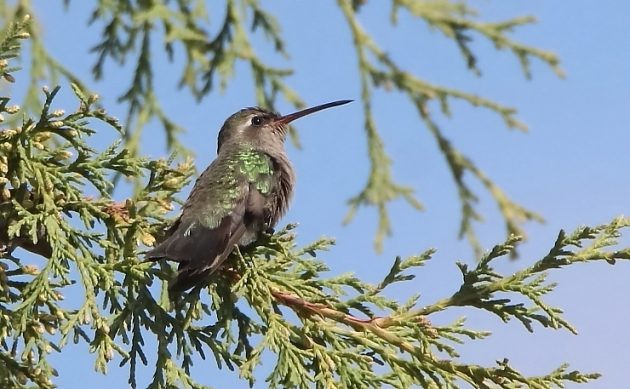
Then, to my right, I saw an enormous flowering agave plant. Agaves are those spiny non-cactus rosette plants one is likely to see in Western movies. They are also from the family responsible for mezcal and tequila. They end their life cycle by producing a single flower stalk, which can sometimes grow thirty or forty feet tall. This one was at least in the thirty-foot category, and it was buzzing with hummingbirds. (Among other critters — more on that later.)
First, I saw Berylline Hummingbirds.
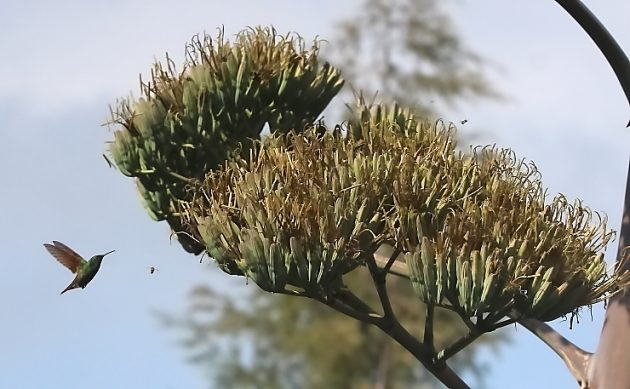
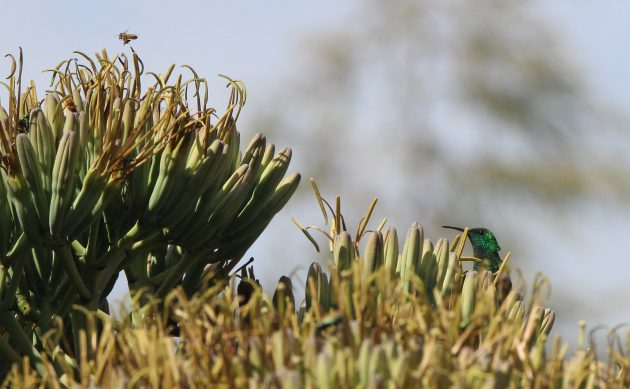
Then some male Broad-billed Hummingbirds jumped into the fray.
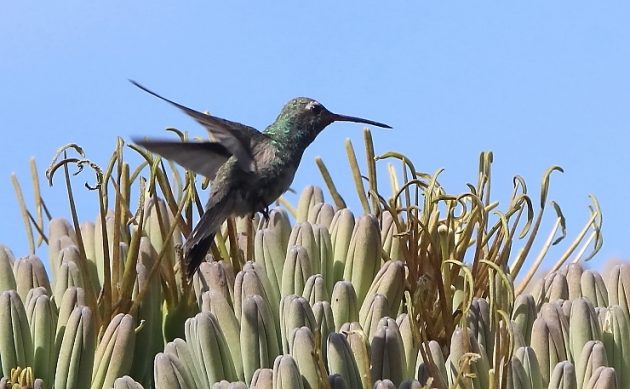
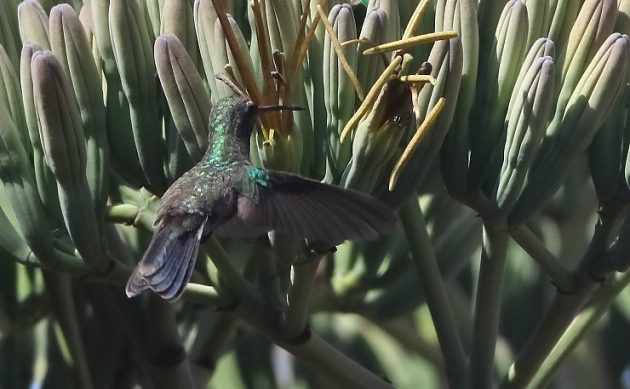
Broad-billed Hummingbirds really dive into their work.
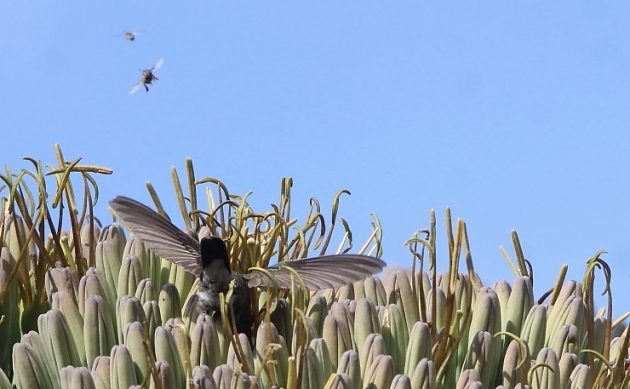
But the Beryllines refused to give up their ground (or, in this case, their inflorescence).
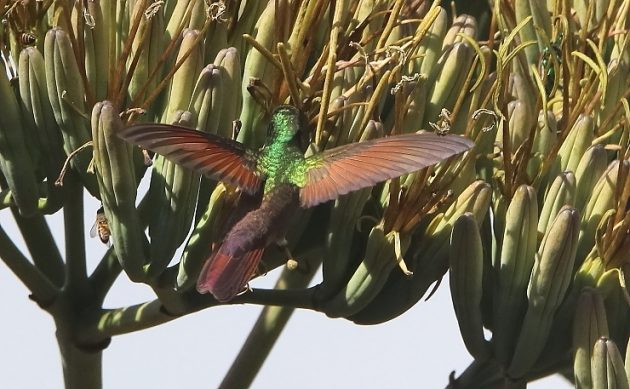
And at the very last moment, a Violet-crowned Hummingbird completed our triumvirate of most-common hummers.
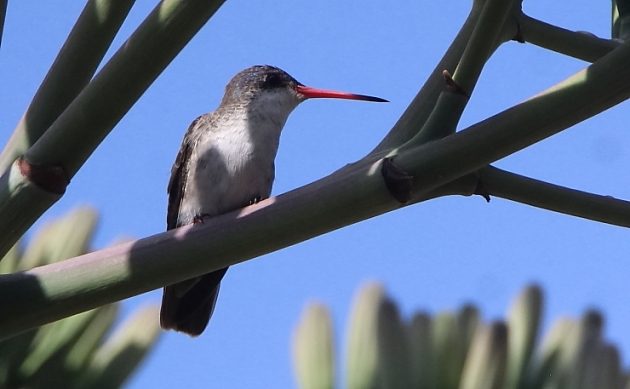
There’s that violet crown.
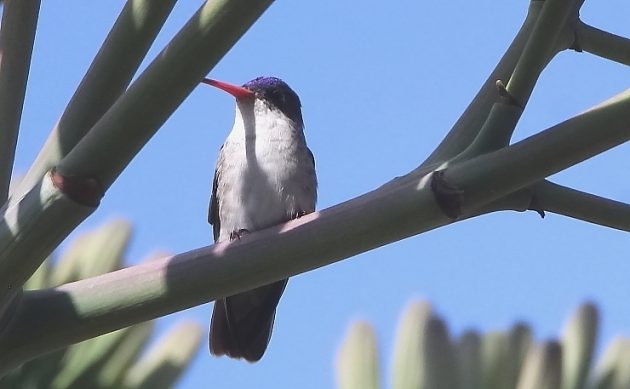
You may have already noticed the great number of insects feeding along with these hummers. The reddish insect in the center of this photo is a Tarantula Wasp. They are reputed to have the second-most painful sting of all insects, but are, fortunately, not aggressive. The brilliant green insects at each end are Jewel Scarabs, of which Michoacán has many. The bees are, well, bees. Exactly what did you think I was going to say about those?
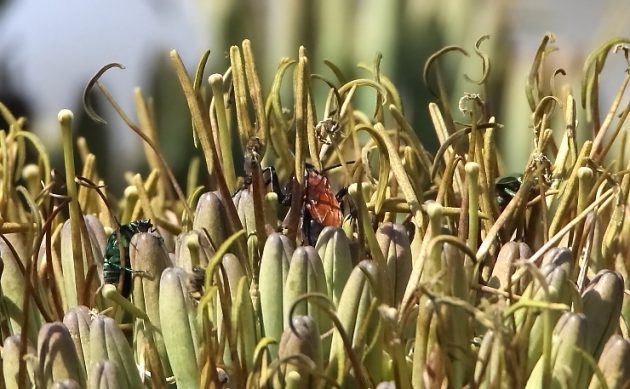
I spent quite a bit of time at my agave enjoying the show. It was definitely a highlight for the day. But I was only half-way on my route, so I eventually moved on. Here are some of the remaining highlights:
Chipping Sparrows are far from rare down here, but this day, they seemed to be everywhere. So here is one out of many:
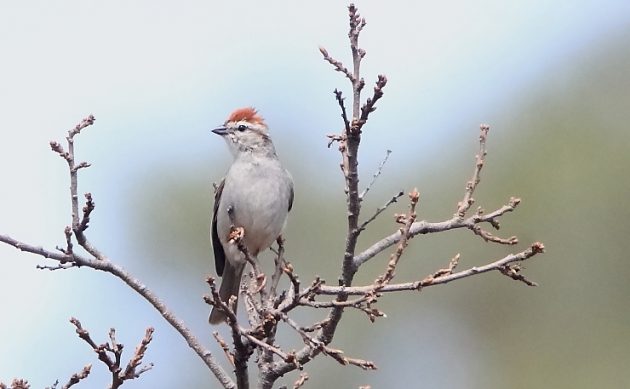
I was a bit surprised to see this lovely Grace’s Warbler move out of its pine-tree comfort zone.
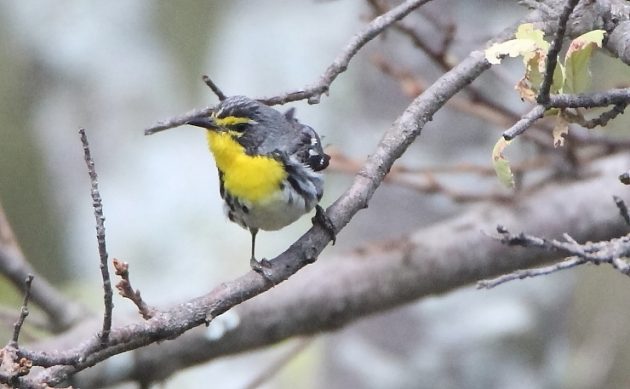
I have a deep appreciation for Mexico’s endemic Buff-breasted Flycatchers, as they are our only Empidonax that I never confuse with our other nine. (Yes, you heard me: nine. Weep for me.)
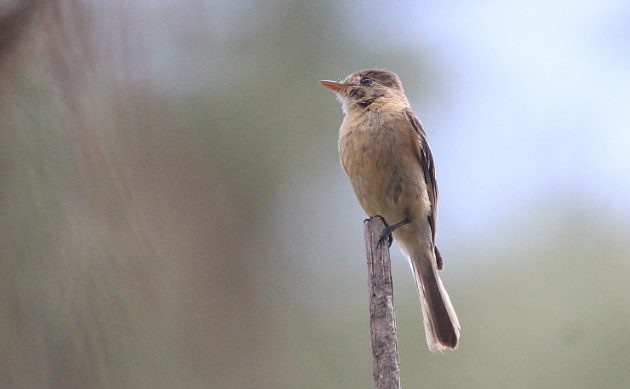
My encounter with this Red-tailed Hawk was perhaps my closest, and certainly my longest, ever. Way too many photos were taken.
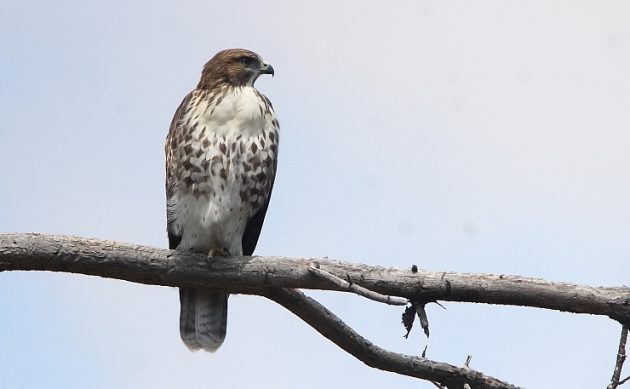
I’ll end with this Acorn Woodpecker, because, honestly, how could I not?
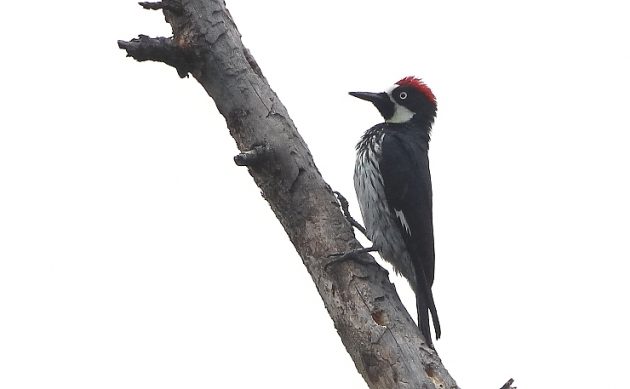
All in all, it was quite a good day. But if I had to choose just one spot, it would be that agave, honey.













Leave a Comment